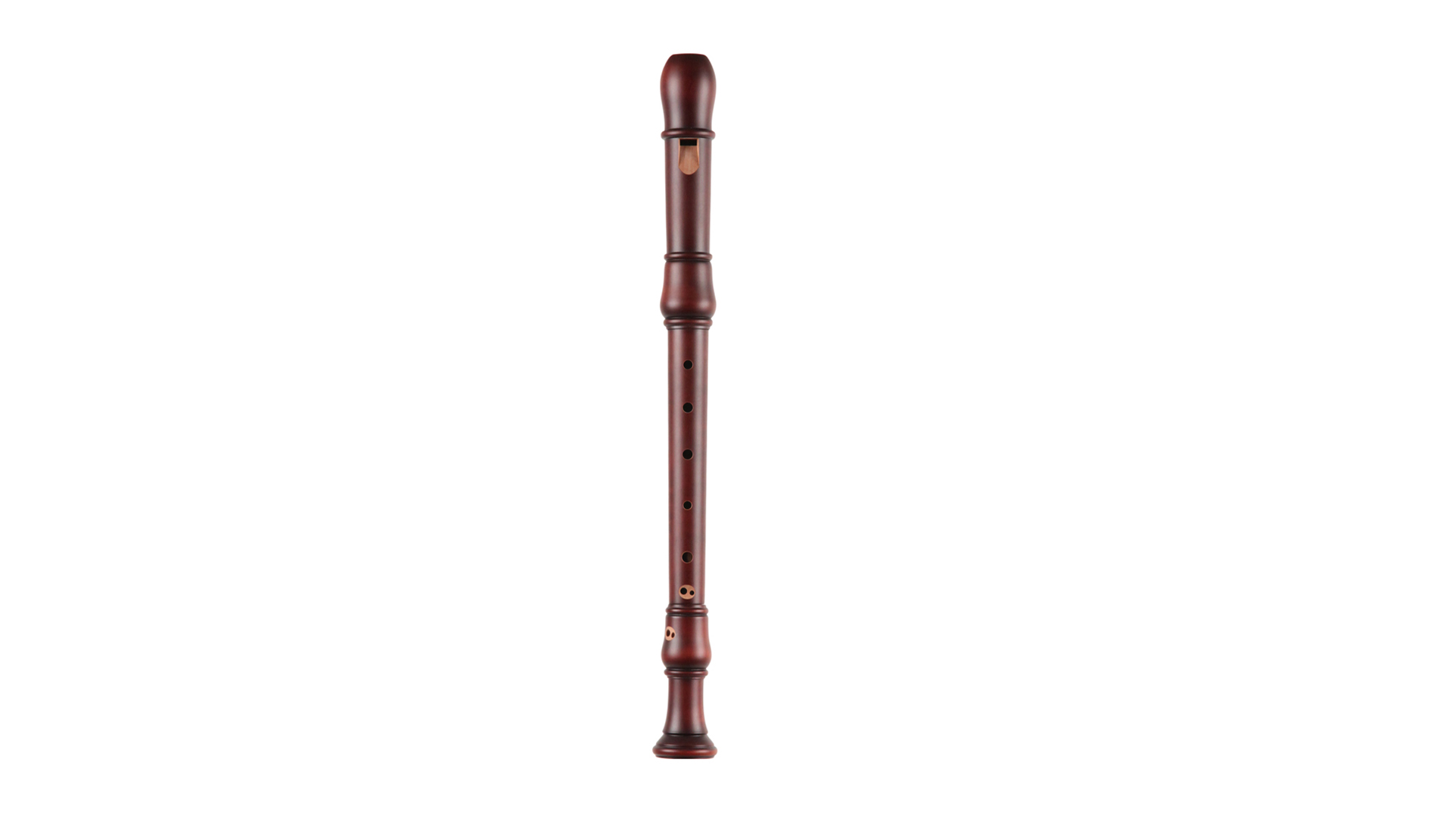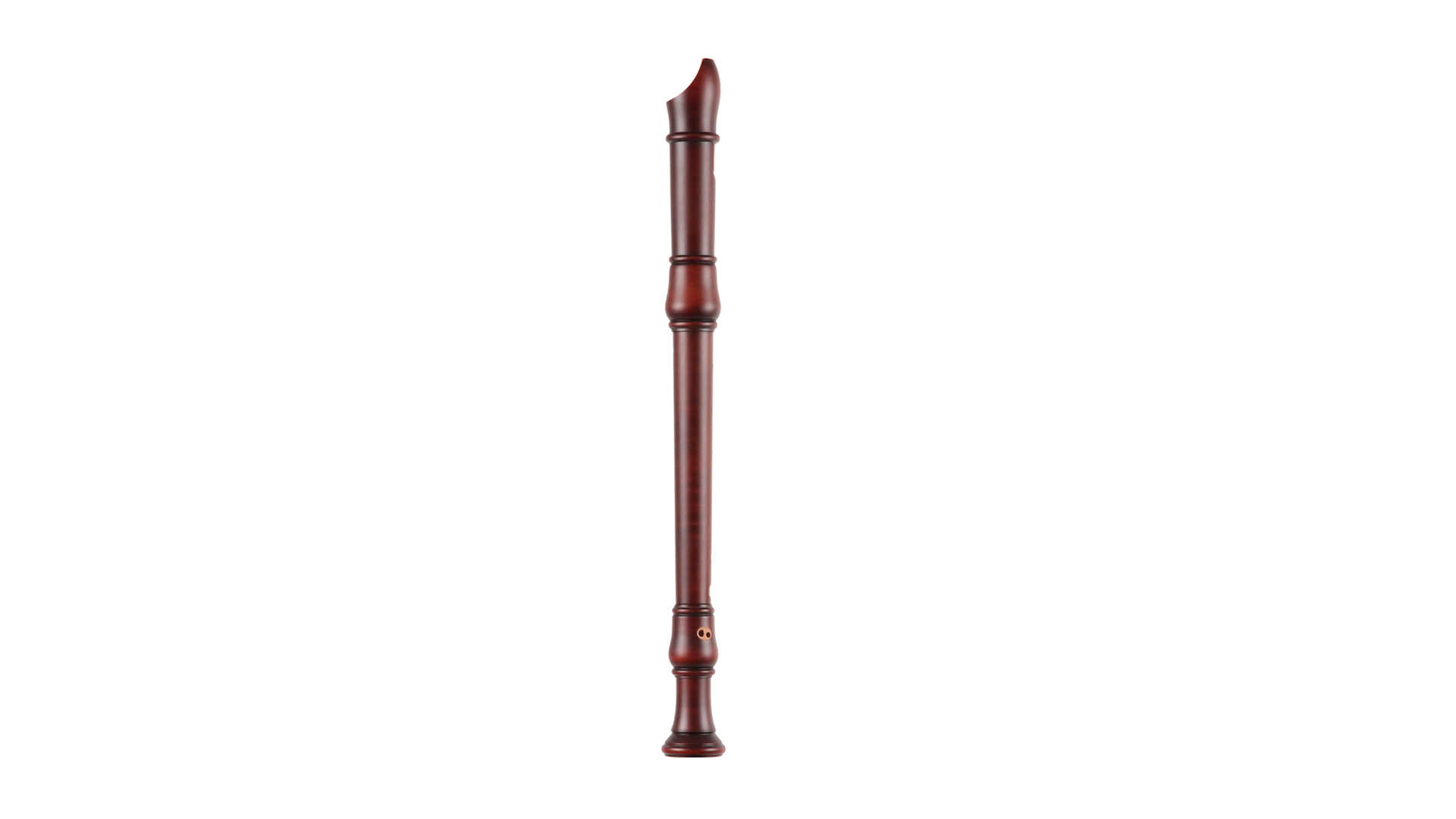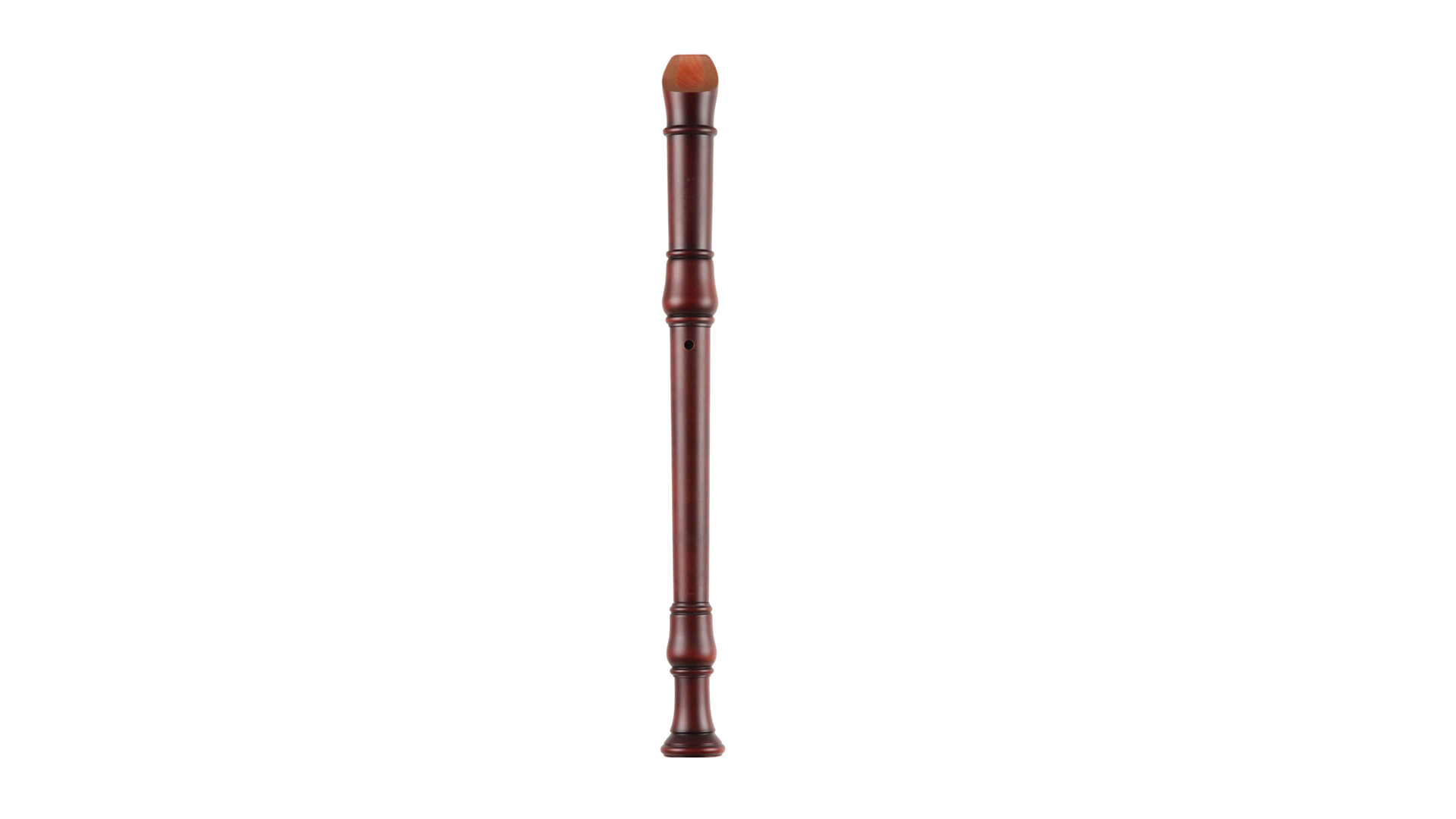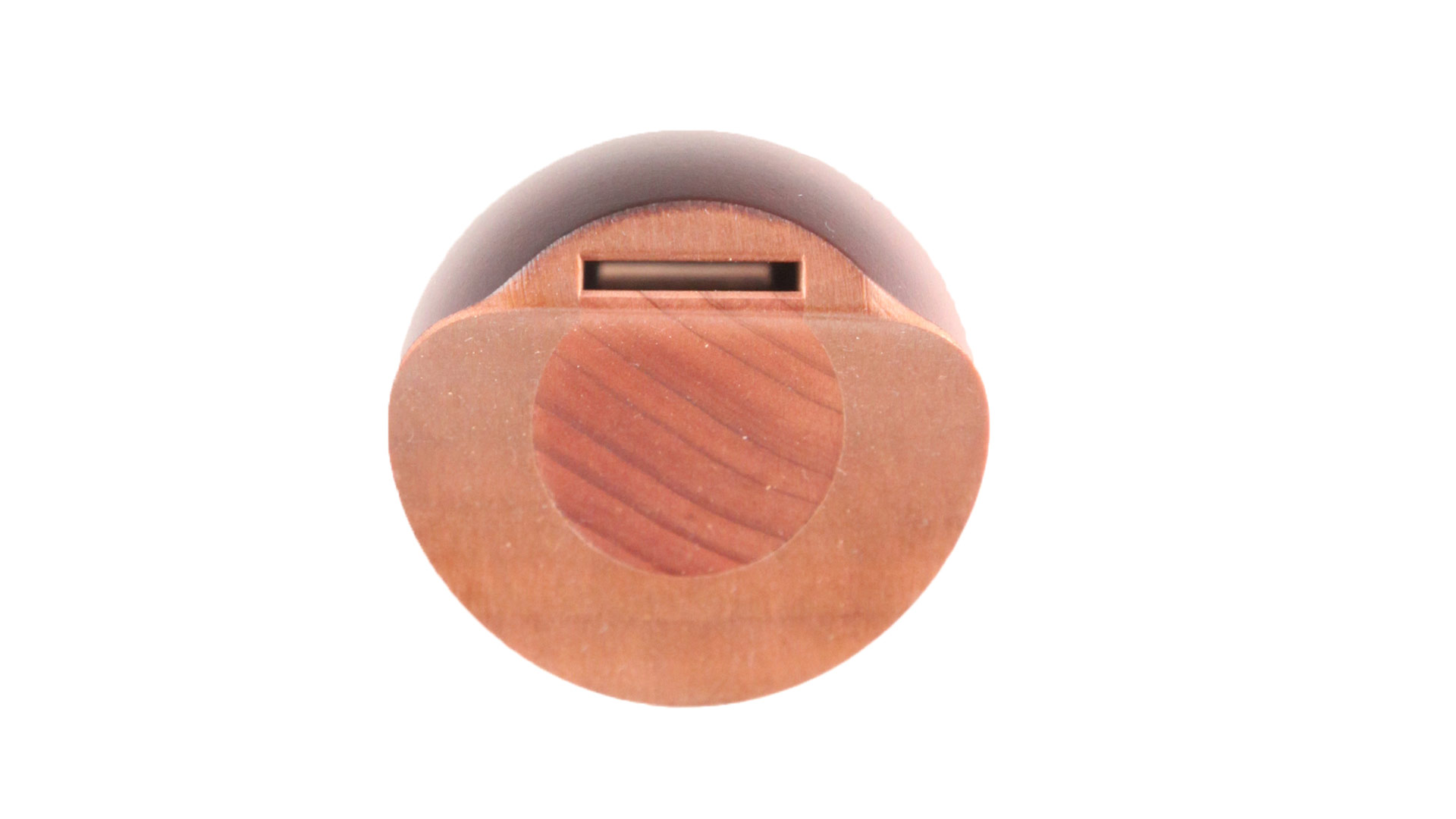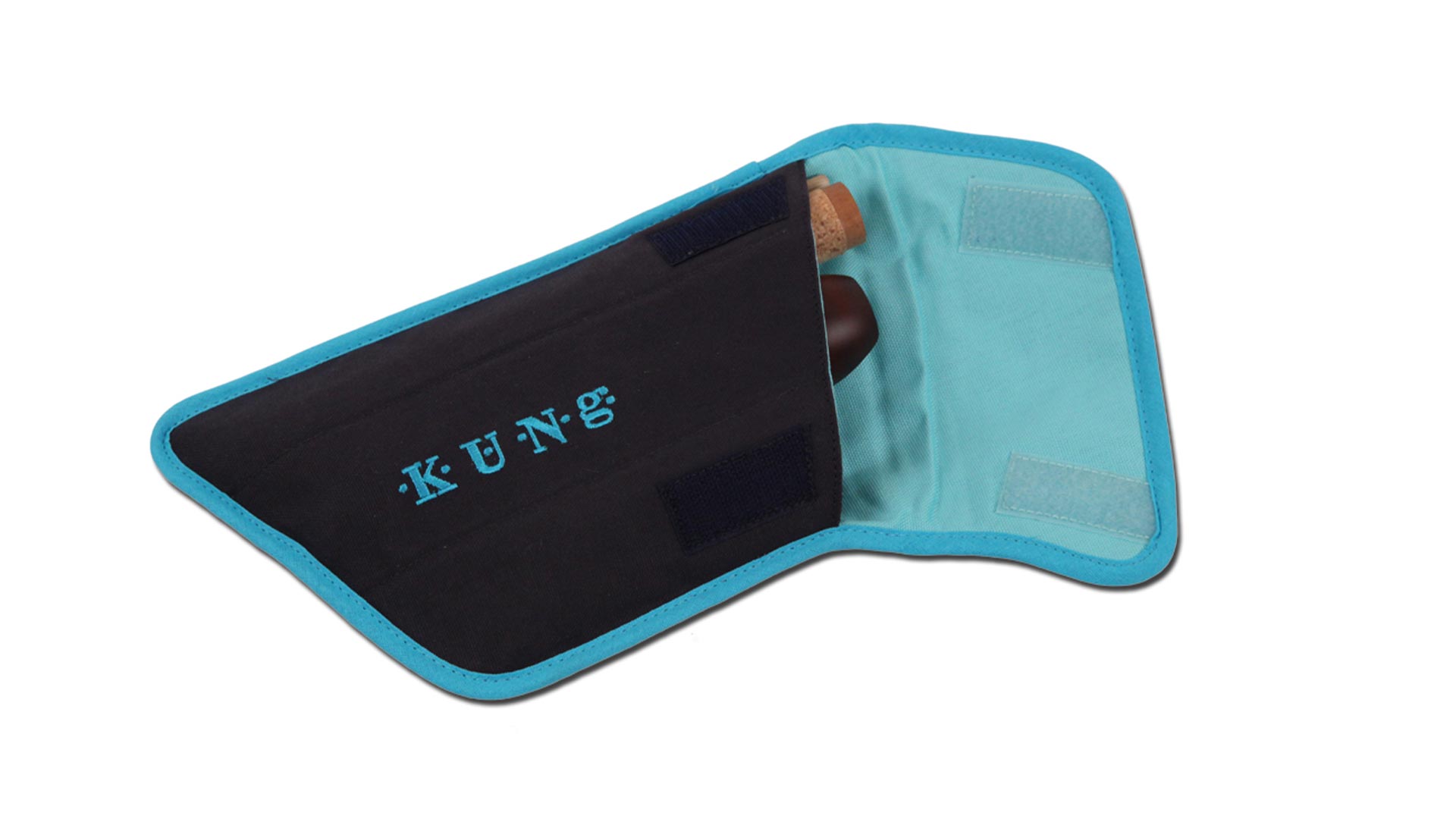Baroque Doublehole, Item: 1411-KUE Stained, 442 Hz
This recorder with the article number: 1411-KUE crafted by Küng is a recorder, the in daily use constantly will make happy.
This property is based to a large part on the masterful composition of the groundbreaking form in combination with the sound of the material Pearwood.
The bore
The course of the inner bore of the instrument is light cylindroconical. This kind of bore shape gives the instrument this typical sound.In principle, recorders with wider bore sound warmer, fuller, more fundamental and thus more suitable for ensembles than instruments with narrower inner bore.
For what styles can this instrument be used for?
Pearwood is greatly suitable for instruments used for: focus on choral playing, recorder ensembles and orchestras, other styles are possible.To whom is this musical instrument addressed?
From this it results that instruments made of Pearwood are especially for ambitious amateurs and advanced players suitable. A further important principle is that a demanding instrument makes the learning progress as pleasant apparently low-cost offer.The windway of a recorder
The windway is the area in the head of the instrument where the blowing air of the musician is formed into a sheet of air. This air leaf is of one of the most important elements of the sound of the recorder. In interaction with the labium, the air stream is very quickly alternately directed inwards and outwards. This swinging flow stimulates the air in the body of the instrument. And this is the origin of the recorder sound. This is the reason why the labium must not be damaged in any case. The same rule applies to the windway. Otherwise suffer the artistic applicability of the recorder.
The windway of the instrument 1411-KUE of Küng has this windway shape: Straight, conical.Conical shaped windways accelerate the air leaf more than cylindrical windways.
Never violate windway and labium! Their meaning for the recorder is exceedingly complex in their geometric shaping. Even minor damages here often lead to a total loss!
Fingerings
The model Küng 1411-KUE is manufactured in the version: Baroque Doublehole .
Construction of the body
The number of parts of an instrument influences basically the way the recorder in use on the one hand is simple to handle in terms of easy assembling and on the other hand for the convenient transport.
A point that becomes especially important when larger or multiple instruments have.
{Experienced ensemble players can tell you a thing or two about this. Or ask veteran ensemble leaders.
Leaders of recorder choirs know how useful good and compact recorder transport packaging is.
Packaging and accessories
The model is supplied as standard with: BagThe matching accessories included: Wiper rod, fingering chart, care instructions
Notes on the way to new recorders
Ask acquaintances!The search for your new recorder should in no case be influenced by "generally accepted" rules.
Get your own realizations after playing a recorder. Don't let "well-meaning" advice.
Do not let others stop you from testing of an yet unknown instrument.
Your musical taste is as individual as you are.
Therefore, only you can decide which instrument will personally achieve.
Our recommendation is therefore: Play different models!
After that you will be amazed and can make a safe decision.
Information about instruments with keys
Not always can tone holes be drilled in places in the that are comfortable and easy to reach with the fingers. Especially with deep recorders sit for acoustic necessities tone holes ergonomically not to reach. On these instruments, keys are added, which make gripping clearly easier, or possible in the first place.This allows it to be {pleasant|light|ergonomic|conspicuous|above average| good play even by players with smaller hands.
The instrument 1411-KUE has the following flaps:
| Accessories: | Wiper rod, fingering chart, care instructions |
|---|---|
| Bore shape: | light cylindroconical |
| Construction: | 3-part (head, middle, foot) |
| Fingering: | Baroque Doublehole |
| Material: | Pearwood |
| Material: Botanical name: | Pyrus communis |
| Material: Country of origin: | Austria |
| Packing: | Bag |
| Surface treatment: | Stained |
| Target group: | Ambitious amateurs and advanced players |
| Weight with case: | 0.296 kg |
| Windway: | Straight, conical |
| Size: | F-Alto |
| Tuning pitch: | 442 Hz |
| Group: | Recorder |
| Material structure: | Pearwood: Very load-bearing with a fine-pored structure. |
| Musical use: | focus on choral playing, recorder ensembles and orchestras, other styles are possible |
| Sound characteristics: | Pearwood: Soft, choral sound. Suitable for playing in a group |
Login



